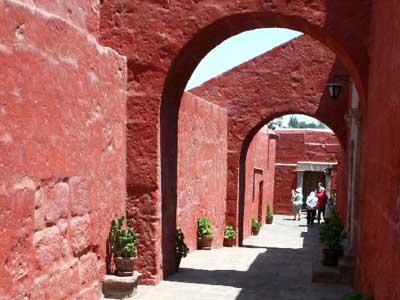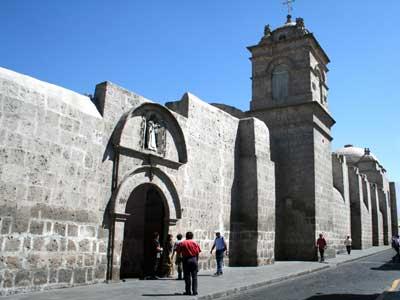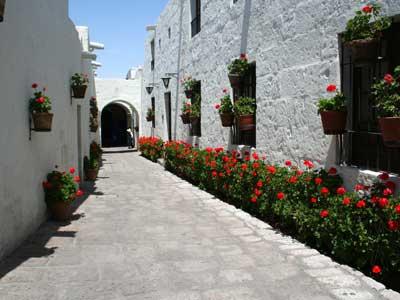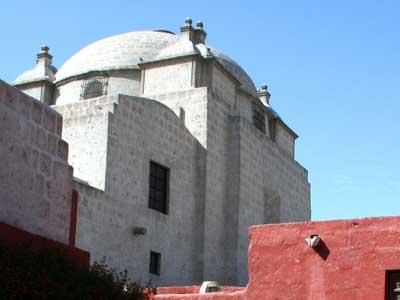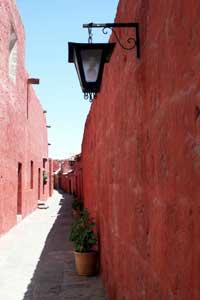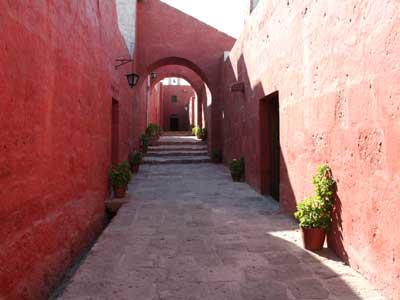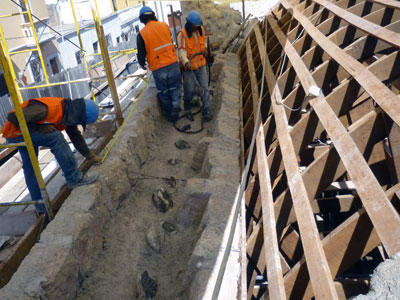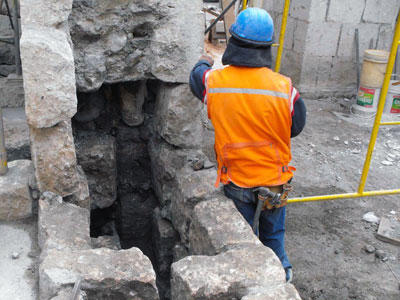Santa Catalina Monastery
The Convent of Santa Catalina de Siena was built in 1579 and is located in the historical center of Arequipa, Peru. It served as a cloister for Dominican nuns from the sixteenth to the eighteenth centuries, and still houses a small religious community today. The complex, which stretches over 20,000 square meters, is built from volcanic sillar stone and is organized into cloisters, living quarters, a plaza, a gallery, and a chapel. Environmental pollution has accelerated the deterioration of the structure as well as of the paintings and sculptures in the complex. Because sillar is a porous stone, air pollution and the presence of salts have caused cracks in the roof, a depletion of the mortar between joints in the walls, and the displacement of stones. Santa Catalina sits in a volcanic area that has a large amount of seismic activity. Although the monastery was restored after devastating earthquakes in 1958 and 1960, an earthquake in 2001 has left several areas severely damaged, including areas with valuable sculptures and paintings dating from the eighteenth century.
2008 World Monuments Watch
To highlight the perilous state of the complex, Santa Catalina was placed on the 2008 World Monuments Watch. Promociones Turisticas del Sur S.A., a private group that manages the site for the nuns, partnered with WMF to restore the mural paintings on the lower choir of the church, an area in need of immediate attention. The project also included the conservation of several rooms that had been damaged in a previous earthquake. Several wall sections near collapse were partially disassembled; each stone piece was identified, and then reconstructed using traditional techniques to ensure its stability. The roof was restored to the original barrel vault configuration using wooden trusses and stone voussoirs. The restored spaces were adapted for multipurpose cultural programs for the community, the first of which was an exhibition of panels describing the conservation and rehabilitation work at the convent.
The Santa Catalina convent is an important example of Viceroyal architecture. Separate areas of the structure were built during different centuries, making the complex a showcase of local and colonial styles. The convent is still a functioning religious complex as well as a tourist site. Repair of the structure has created better-equipped living quarters for the nuns as well as a better-managed destination for community members and tourists alike.

